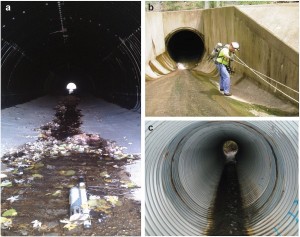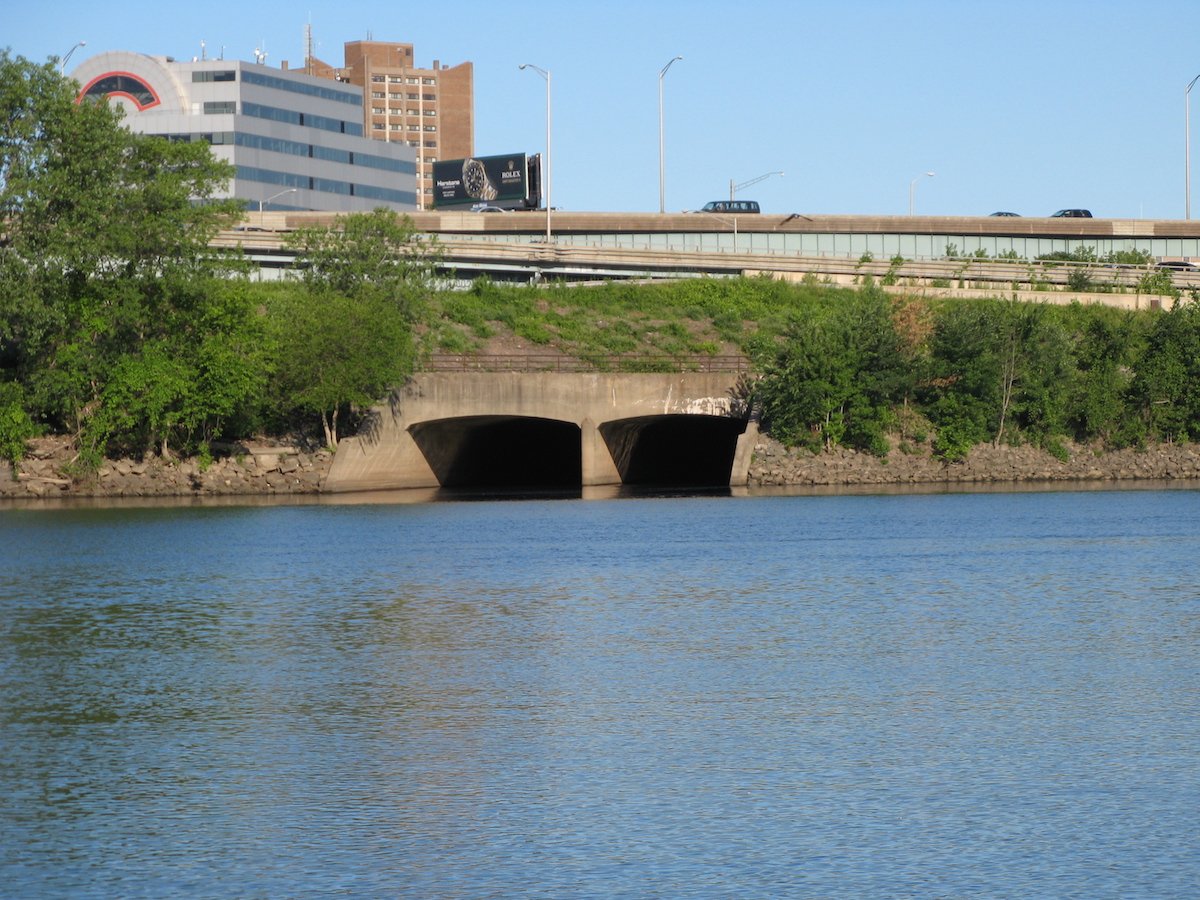There was once a little stream called Sunfish Creek on Manhattan. Named for the animals that swam there, it ran down from where Times Square is today, coursing across 7th Avenue, feeding a pond at 32nd Street and 4th Avenue before spilling into the East River.
No trace of Sunfish Creek exists today. It was piped or paved over in the 19th century to make way for new development, or to contain flooding and disease. Now, it’s just one of hundreds of the city’s waterways that were erased or culverted at that time.
New York is not unusual in this regard. Explore any city enough, and at some point you’re likely to walk on water, so to speak. San Francisco is full of ghost rivers. So are Washington, D.C. and Los Angeles. In the urban core of Baltimore, up to 98 percent of streams are underground.
Early city planners may have hoped for healthier cities when they covered up these streams, but it turns out they created new problems. Paving over and piping waterways often worsens flooding. And as new research by scientists at the Environmental Protection Agency indicates, buried streams can also exacerbate pollution.
In a paper published in PLOS ONE, lead authors and EPA research scientists Jake Beaulieu and Heather Golden found that nitrates—nutrients that can become pollutants—travel on average 18 times further in buried urban streams than they do in open streams, before they are taken out of the water column.
Plants and other organic matter in streams feed on nitrates, which can be found both naturally and in agricultural or industrial run-off. Nitrate uptake, as this feeding process is called, keeps stream ecosystems healthy and oxygenated.
But if nitrates don’t get removed, too many end up flowing through the water and into larger water bodies (think: Baltimore and the Chesapeake Bay). This can result in algae blooms, which suffocate water bodies and can cause massive fish deaths. High nitrate levels in water can also be toxic to humans, especially infants.
With buried streams, there aren’t any leaves or twigs falling into the water. There’s often no light, and little chance for what plants might end up in the pipes to survive. There is, in other words, very little organic matter available to eat up nitrates that enter the streams.
“Buried streams aren’t very biologically active,” says Golden. “Just walking through these systems, you can see that there’s not much going on there.”
Using results from previous research on a few streams in Baltimore and Cincinnati, Golden, Beaulieu, and a team of EPA scientists developed a simulation that looked at how buried streams affect the presence of nitrate throughout an entire urban watershed. In their simulation, which was a kind of hybrid model of the two cities’ stream networks, they found that buried streams in heavily urbanized areas had particularly unhealthy nitrate flows.
In Baltimore, for example, this would imply that the buried streams in the city core, right near the Chesapeake Bay, have much higher levels of nitrate than those further out in the suburbs. Golden suspects this is because water in suburban buried streams spends more time in pipes and interacts with other waterways before getting to the outlet (e.g., the Bay), allowing greater opportunity for (healthy) nitrate uptake to occur.
Not all urban watersheds necessarily follow this pattern, the scientists say, since not all city cores are built around bays or rivers. But many are, and as urbanization spreads over the coming decades, stream burial is likely increase, too—exacerbating the risks of nitrate pollution.
One solution may be “daylighting,” or unburying buried streams. Yonkers, Cincinnati, Seattle, and Kalamazoo have all undertaken daylighting projects in the recent past. In Baltimore, talks of daylighting the Jones Falls river, which drains directly into the city’s Inner Harbor, have been going on for years.
There are considerable economic benefits that accompany unmasked, revitalized rivers; think of developers drooling over Los Angeles’s forthcoming restoration of the L.A. River, a version of daylighting. But Golden and Beaulieu hope that quantifying the ecological effects of buried streams will motivate more daylighting projects—and, as cities expand, motivate planners to leave free-flowing rivers unburied to begin with.





